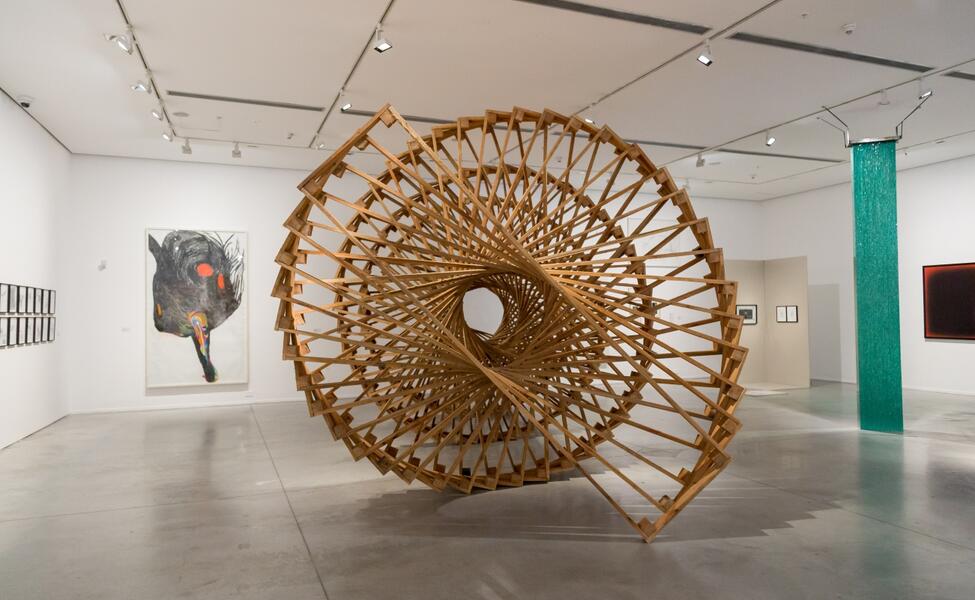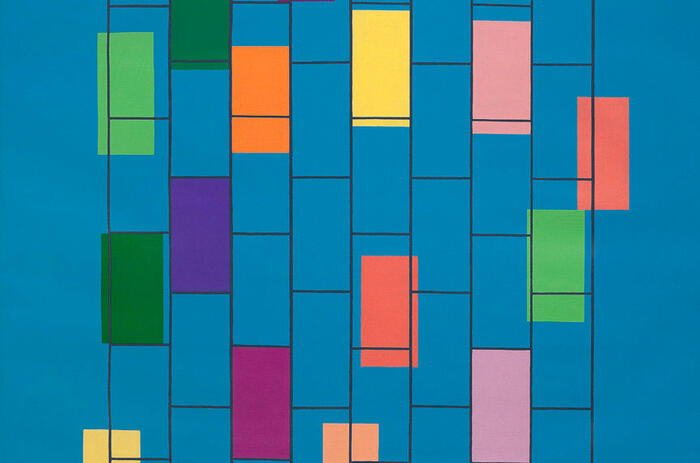THE MUSEUM OF MODERN ART OF BUENOS AIRES PRESENTED THE CREATION OF AN ACQUISITION COMMITTEE
The Museum of Modern Art of Buenos Aires (MAMBA) announced the creation of its first procurement committee dedicated to the heritage of the institution. With the presentation of the program yesterday, September 9, the Museum takes a historic step to revitalize its collection, currently composed of more than seven thousand works of modern and contemporary international art of the twentieth and twenty-first century. The creation of this committee arises from a plan to modernize the museum, under which the remodeling and expansion of the building located at Avenida San Juan 350 (San Telmo, Buenos Aires) was carried out, celebrating its 12 years with the reopening on 12 July 2018.

Composed by Victoria Noorthoorn - director of the Museum of Modern Art of Buenos Aires from 2013 to the present- and invited donors, the committee is public-private. As explained from the Museum, this will have repeated meetings where the areas of Management, Curatorship and Heritage of the Museum will present the pre-selections of the possible artworks to be acquired. Finally, the works acquired will be defined from a vote among the members of the committee.
"From the creation of the procurement committee, MAMBA continues promoting modern art and the plurality of contemporary artistic trends, transmitting its value to the community and inciting debate and theoretical reflection," said Victoria Noorthoorn at the presentation of the committee. “We are proud that the Modern has one of the largest collections of modern and contemporary Argentine and international art in our country, and that it continues to grow, in line with its mission to always remain at the forefront of art, for more than sixty years of the foundation".
-
"Una llamarada pertinaz", Colección del Moderno. Ph: Guido Limardo.
-
"Una llamarada pertinaz", Colección del Moderno. Ph: Guido Limardo.
-
"Una llamarada pertinaz", Colección del Moderno. Ph: Guido Limardo.
-
"Una llamarada pertinaz", Colección del Moderno. Ph: Guido Limardo.
-
"Una llamarada pertinaz", Colección del Moderno. Ph: Guido Limardo.
MAMBA Collection
Founded in 1956 by the poet and art critic Rafael Squirru, the Museum of Modern Art of Buenos Aires depends on the Ministry of Culture of the Government of the City of Buenos Aires. Since its creation, Squirru assumed the direction of the museum and dedicated his work to the growth of Argentine art within the local and international scene. In the founding decree of the museum he wrote: “Believe the Museum of Modern Art of Buenos Aires, which will depend on the Ministry of Culture and will have as its main objective to illustrate, in an objective and documentary way, all the manifestations of the spirit whose character allows to qualify them with that denomination. " Since then, the first four years the museum did not have an official headquarters. The press called it the "Ghost Museum" and, when they interrogated Squirru, he replied: "Le Musée c’est moi" (The Museum is me).
Later, together with Hugo Parpagnoli - who would assume the direction of the Modern between 1963 and 1971 - Squirru laid the foundations of the current collection, which would be enriched by the contributions of the future directors of the institution.
In 1959 he received the first donations of artworks by Uruguayan artists and to make acquisitions of works by Alberto Greco, Kenneth Kemble, Luis Alberto Wells, Luis Felipe Noé, Miguel Ángel Vidal, Eduardo Mac Entyre, Raquel Forner and Antonio Berni, among many others. During the direction of Parpagnoli, Pablo Picasso, Henri Matisse, André Derain, Hans Arp, Joan Miró, Francis Picabia, Paul Klee, Marc Chagall and Salvador Dalí joined the collection. They also entered the Modern works of artists such as Alberto Heredia, Juan Carlos Castagnino, León Ferrari, Víctor Magariños, Manolo Millares, Emilio Renart, Rubén Santantonín, Ernesto Deira and Jorge de la Vega.
During the two directions of Guillermo Whitelow (1971-1973 and 1977 - 1983) the collection received important donations such as the collection of Dr. Ignacio Pirovano (collection of 59 artworks of modern art by national and international artists, including George Vantongerloo, Josef Albers, Piet Mondrian and Francis Picabia). In 1999 the museum created the collection of Argentine Photography, the first of Argentine photographic art. Currently, it has more than three hundred works by artists such as Anne Marie Heinrich, Anatole Saderman, Pedro Otero, Grete Stern, Jorge Roiger, Sameer Makarius, Horacio Coppola, Sara Facio, Julie Méndez Escurra, Dalila Puzzovio, Juan Travnik, Alicia Sanguinetti Helen Zout, Marcelo Grossman, Gabriel Valansi, Leandro Katz, Alejandro Kuropatwa, Liliana Porter, Marie Orensanz, Miguel Rothchild, Ar Detroy, Graciela Hasper and David Lamelas, among others. In 2000, under the leadership of Laura Buccellato, the Museum received the legacy of Alberto Heredia: five hundred artworks by the artist and other Argentine artists, in addition to the Heredia department itself located at Av. Caseros 828.
Already under the direction of Victoria Noorthoorn, in 2014, the Augusto y León Ferrari Arte y Acervo Foundation donated seventy-two artworks on paper by León Ferrari. In 2015, after La Menesunda was presented by Marta Minujín, and incorporated into the Museum's heritage thanks to the artist donation. In 2017, Patricia Phepls de Cisneros Collection (CPPC) delivered eight works by Ernesto Ballesteros, Alejandro Corujeira, Matías Duville, Eduardo Navarro, Elisabet Sánchez and Judi Werthein to the museum. During 2019 the Procurement Committee added the following works: Two clowns by Germaine Derbecq, Strange Entities. Epic of being Beta (verse and reverse) by Elda Cerrato, San Sebastián by Santiago García Sáenz and La boca del infierno, by Florencia Bohtlingk.



